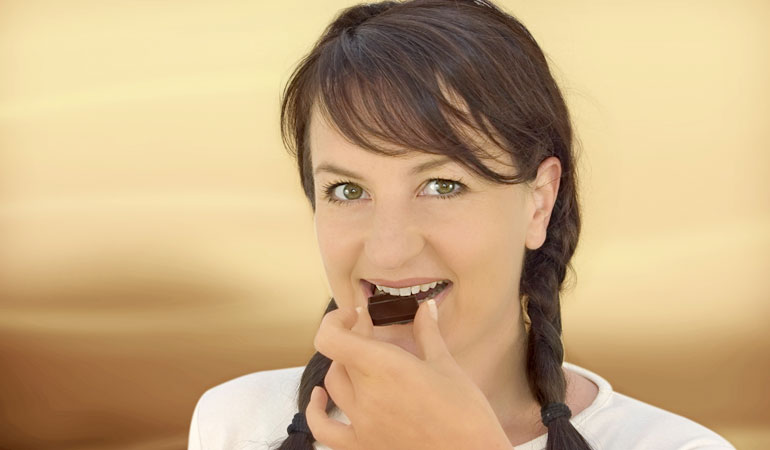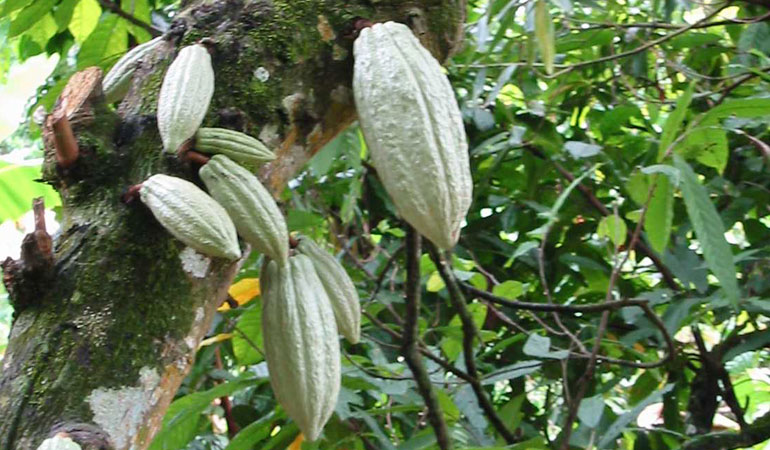Ever wondered, “how is chocolate made?” Let’s pick up with the arrival of the cacao beans at the factory (or click here to learn about how cacao is grown).
At the factory, the cacao beans are first sifted for foreign objects- you know, rocks, machetes, whatever got left in the bag. The cacao is weighed and sorted by type so that the manufacturer knows exactly what type of cacao is going into the chocolate. Some manufacturers use up to twelve types of cacao in their recipes, and they must carefully measure so that the flavor is consistent time after time.
Next, the cacao beans are roasted in large, rotating ovens, at temperatures of about 210-290F. Roasting lasts from half an hour up to two hours. The heat brings out more flavor and aroma, and it dries and darkens the beans.
Then the cacao beans are cracked and winnowed, that is, their outer shells are cracked and blown away, leaving the crushed and broken pieces of cacao beans, called “nibs.” At this point, we have something edible and really chocolatey, but they’re also really bitter. You might try some cacao nibs on a salad. Mmm.
But how is chocolate made? We’ve gone through all these steps and we still don’t have a chocolate bar! Be patient, it can take up to a week!
The cacao nibs must now be crushed and ground into a thick paste called chocolate liquor (there is no alcohol in it). What happens next, though, depends on what type of chocolate we’re making.
Let’s pretend that in addition to knowing, “how is chocolate made?” you also want to know how cocoa is made. Say the manufacturer divides our chocolate liquor in two. We’ll make cocoa with half, and use the other half to make some chocolate bars.
To make cocoa, the powdery stuff you mix up into hot chocolate, the cocoa liquor is slammed by a giant hydraulic press. This removes much of the fat, or cocoa butter. The cocoa butter will be used in making chocolate, but it is also used in cosmetics and medicines. What’s left of the slammed chocolate liquor is very dry and can be ground into cocoa.
Now, on to the chocolate, which we’ll make with the other half of our chocolate liquor. Chocolate liquor by itself is bitter and not very smooth and creamy. To sweeten it up and improve the texture, the manufacturer will add things like sugar, cocoa butter, vanilla, and milk.
You could eat this now, and it would taste pretty good, but it wouldn’t have the texture you associate with a chocolate bar, and you still wouldn’t be able to answer the question, “how is chocolate made?” The cacao and the sugar are still pretty grainy at this point, so the manufacturer runs the mixture through a series of steel rollers to refine the texture.
To further refine the texture, and to really bring out the flavor, the mixture is then “conched.” That is, it’s run through a chocolate making machine (a conch – so named because the first such machine looked kind of like a conch shell) that mixes and mashes and swirls and aerates the chocolate. At this point we will probably add some more cocoa butter and maybe some soy lecithin – these will give the chocolate its silky smooth texture. Conching can last a few hours for cheaper chocolates, and up to six days for the expensive stuff!
The chocolate is then tempered by stirring it, letting it cool, heating it back up slowly, and repeating the process several times. This will give our chocolate that nice glossy look, and it will help it melt properly.
Finally, we have chocolate! Some people might use the liquid chocolate in candies or cookies or ice cream, but let’s pour our lovely mixture into a mold (how about in the shape of a bunny rabbit?), let it harden, then chomp its ears off!
Mmmm! You are now a chocolate smarty-pants.








93 thoughts on “How is chocolate made? From bean to bar…”